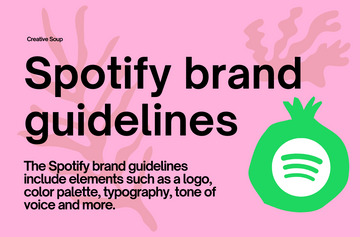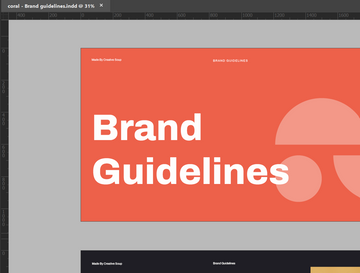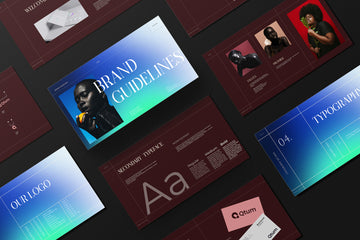A Comprehensive Guide to Determining Your Fair Price
Hey there!
Welcome to the ultimate guide on pricing for graphic designers. Today, we'll dive into the age-old debate of value-based pricing versus hourly rates. It's a topic that sparks endless discussions, but fear not! We'll unravel the mysteries and equip you with the knowledge to make informed pricing decisions. So, let's get started!
Pricing for Graphic Designers - A Matter of Value
 You've probably heard the advice that pricing should be based on value rather than time. But how do you calculate a tangible price from something as intangible as value? We've got you covered! In this guide, we'll shed light on the two main approaches: hourly rates and value-based pricing. So, buckle up and let's explore the pros and cons of each method.
You've probably heard the advice that pricing should be based on value rather than time. But how do you calculate a tangible price from something as intangible as value? We've got you covered! In this guide, we'll shed light on the two main approaches: hourly rates and value-based pricing. So, buckle up and let's explore the pros and cons of each method.
The Pitfalls of Billing by the Hour

Charging clients on an hourly basis might seem like the default choice, but it comes with its fair share of drawbacks. Let's take a look:
Not beneficial to your client:
When you charge by the hour, it actually motivates you to take longer on the project. After all, the more time you spend, the more it costs the client. This misalignment of incentives can strain the client-designer relationship.
Not beneficial to your business:
Conversely, charging hourly penalizes you for working efficiently. If you're a pro at what you do and can complete tasks quickly, you deserve to be rewarded for your expertise. Unfortunately, the hourly model doesn't always accommodate this, leaving you with less income than you deserve.
Embracing Value-Based Pricing
Enter value-based pricing, where you get paid for the value you bring to the table. Let's dive into its advantages and disadvantages:

Pros of Value-Based Pricing:
- The client pays for the solution:
Value-based pricing enables you to charge clients based on the value your work brings to their business. Instead of solely focusing on the time spent, you emphasize the impact and outcomes your design solutions provide. This leads to fair compensation for your efforts.
- High profits:
By pricing based on value, you have the potential to earn more than you would with hourly rates. When you effectively communicate and deliver the value you offer, clients are often willing to pay a premium for your services.
Cons of Value-Based Pricing:
- Requires marketing and positioning:
Value-based pricing necessitates a strong marketing strategy. You must effectively communicate the value you bring to potential clients, ensuring they understand the benefits of working with you. This may require additional research and effort on your part.
- Time investment:
Determining the right price based on value is not a quick and easy process. It requires you to understand your clients, their businesses, and their willingness to invest in design. Taking the time to analyze these factors will help you set a competitive and fair price.
Decoding Value-Based Pricing: A Step-by-Step Guide
Now that we understand the merits of value-based pricing, let's explore the steps to determine a precise number for the value you provide.
- Know Yourself: Setting Financial Goals and Identifying Target Clients
Start by defining your financial goals. What income level are you aiming to achieve? Understanding your target market is equally crucial. Determine the clients you wish to work with and the industries you specialize in. Identifying your skills, knowledge, and the size of your business will help you tailor your pricing strategy accordingly.
- Know Your Clients: Unveiling Their Needs and Preferences
To effectively price your services, you must understand your clients inside out. Consider factors such as the size and stage of their business, their financial capacity, and the importance they place on design. Dive deeper into their mindset, risk appetite, and the perceived value they attribute to your solutions. A thorough understanding of your clients will prevent you from underselling your expertise.
- Know Your Priorities: Balancing Profits and Networking
As you embark on your pricing journey, it's crucial to strike a balance between maximizing profits and building a network. Initially, you may want to invest in networking to increase the value of your services as more people become aware of your skills. As your reputation grows, you can gradually adjust your prices to reflect the quality you offer.
- Know Your Basic Costs: Calculating the Foundation
To determine your pricing structure, start by calculating your basic costs. Add up your monthly overhead expenses required to keep your business up and running. Additionally, account for your own pay, ensuring it covers personal expenses and allows for a bit of creative indulgence. Don't forget to include taxes and factor in the profit you desire at the end of each month. Multiply this by 12 to establish your annual revenue goal.
- Determine Project Cost: Balancing Quantity and Quality
Now that you know your financial goals, divide your annual revenue goal by the number of projects you can realistically complete in a year. This will give you a benchmark for the minimum amount each project should cost. Remember, value-based pricing means pricing the client, not just the project. Consider the size of the client, their revenue growth potential, your expertise, and the unique solutions you bring to the table.
Conclusion
Pricing for graphic designers is a delicate art, balancing the value you offer with fair compensation for your skills and expertise. While hourly rates have their place, value-based pricing provides an opportunity for higher profits and a better alignment of incentives. By understanding yourself, your clients, your priorities, and your costs, you can confidently set prices that reflect the value you bring to the table.
So, fellow graphic designers, as you embark on your pricing journey, remember to embrace value-based pricing and let your creativity shine while ensuring you're justly compensated for the remarkable solutions you deliver.
Happy pricing, everyone!
Download A 13 Free Luxury Products
Access these FREEBIES of resources including Branding Agreement, A3 Brand Guidelines, Invoices and so much more.





